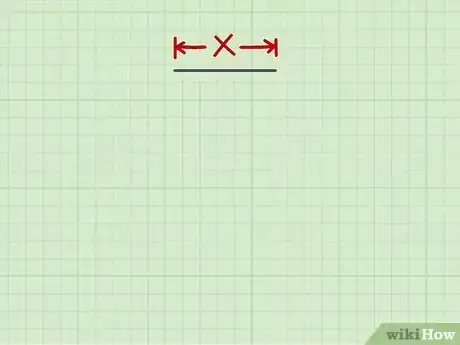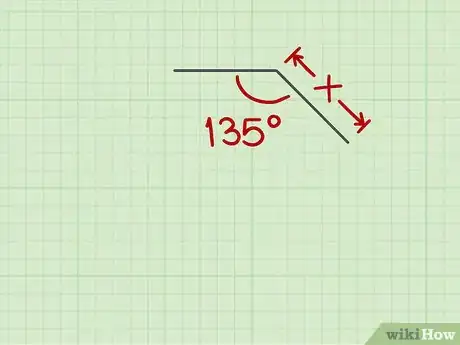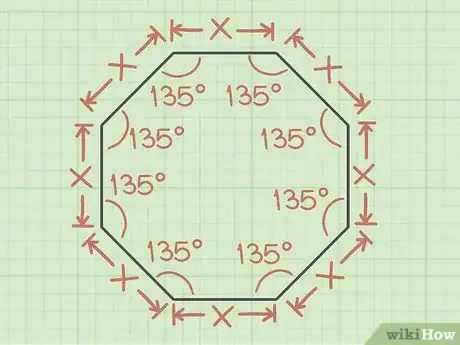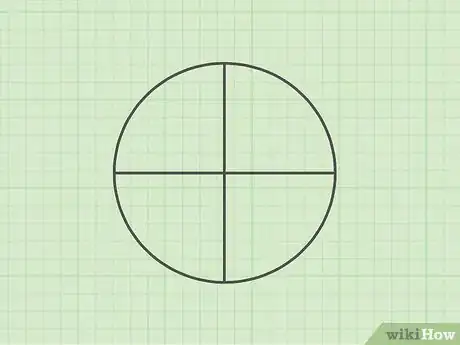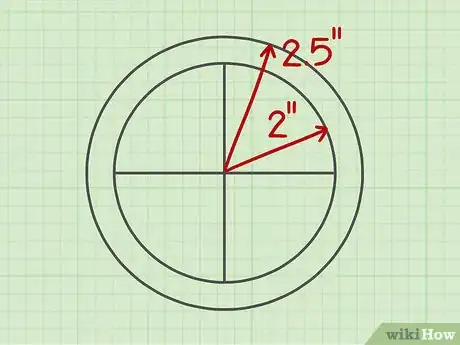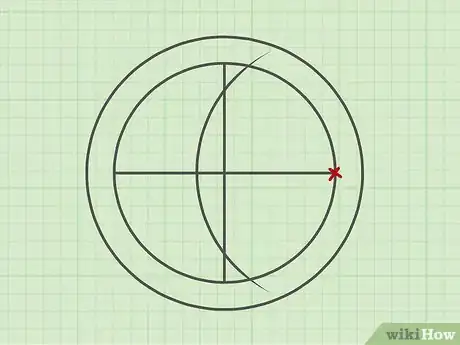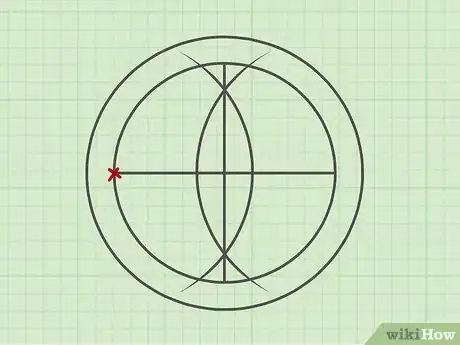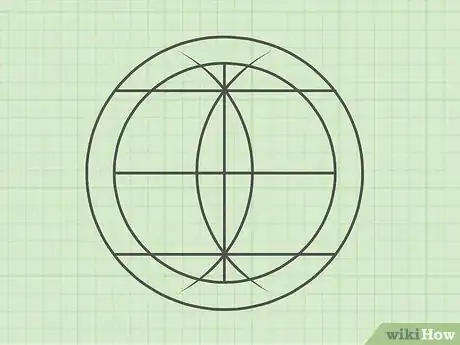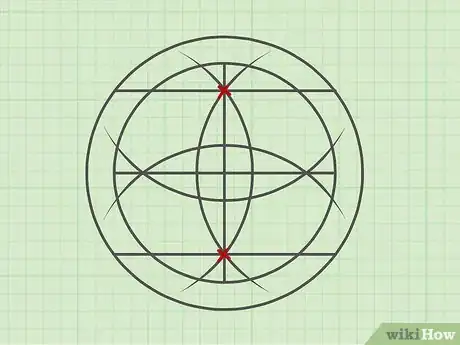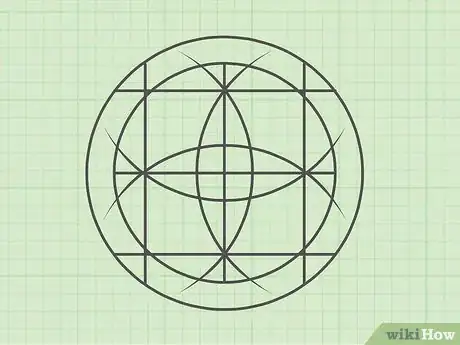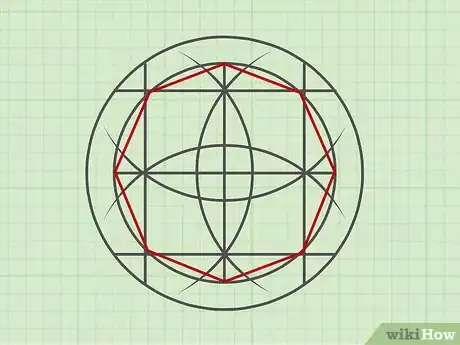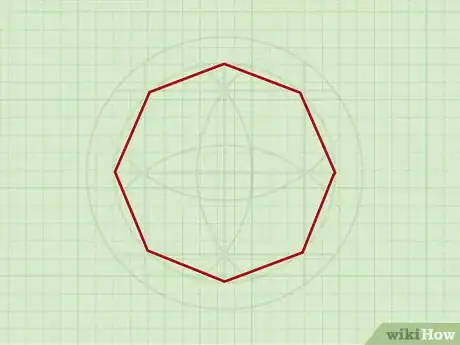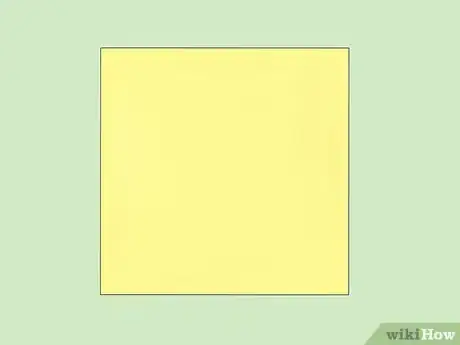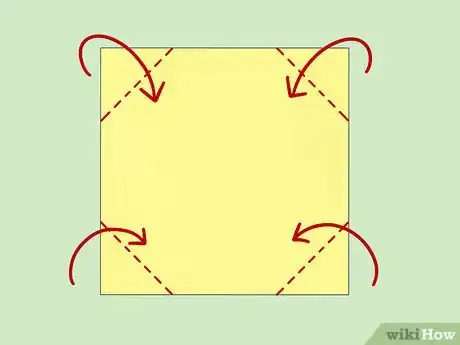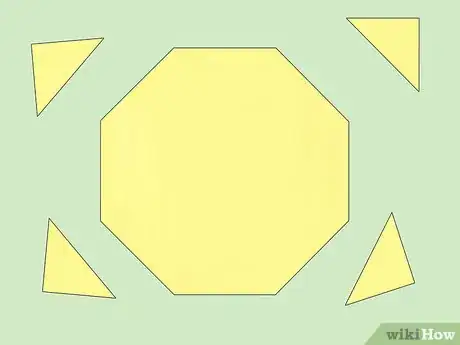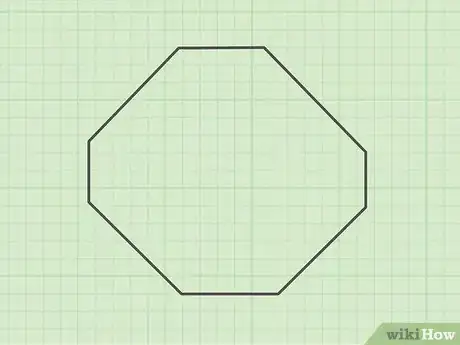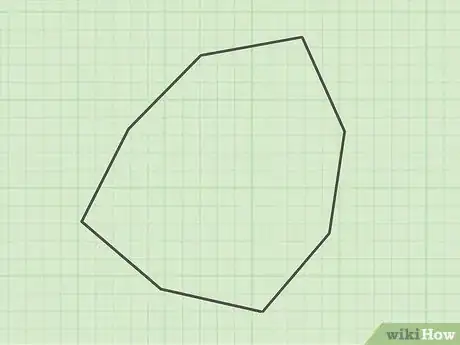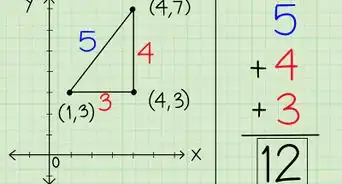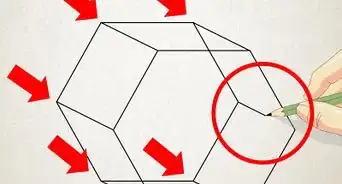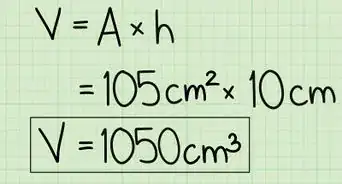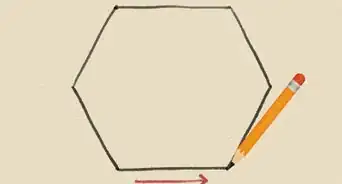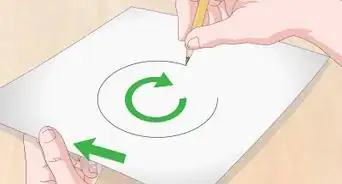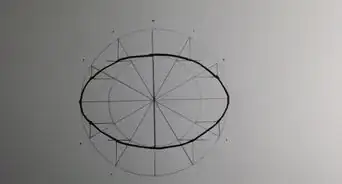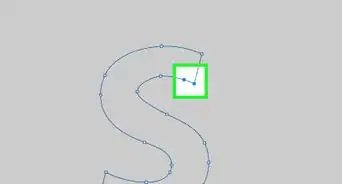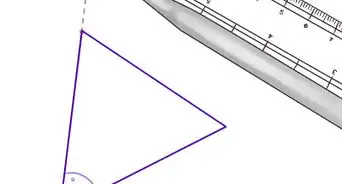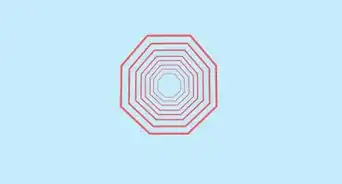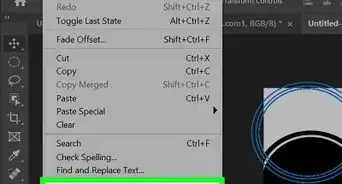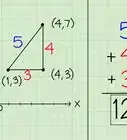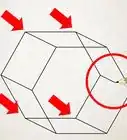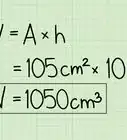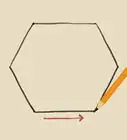wikiHow is a “wiki,” similar to Wikipedia, which means that many of our articles are co-written by multiple authors. To create this article, 20 people, some anonymous, worked to edit and improve it over time.
There are 7 references cited in this article, which can be found at the bottom of the page.
This article has been viewed 254,411 times.
Learn more...
An octagon is a polygon that has eight sides. Generally, when most people think of the word "octagon", they're thinking of a regular octagon - one that has both sides and angles of the same size (like the shape of most stop signs). It's easy to make an accurate octagon in a variety of ways that require only basic materials. Check out the steps below to get started!
Steps
Protractor & Ruler
-
1Draw a straight line with a ruler. This will be the first of the eight sides of the octagon. Draw your line in a spot that leaves plenty of space for the rest of the sides.
-
2Use a protractor to mark a 135o angle. At either end of your line, find and mark the 135o angle. Draw a line of the same length as the first line angled 135 degrees to the original line. This we be the second side of the octagon.Advertisement
-
3Continue creating lines at 135o angles. Follow this pattern, drawing lines of the same length that meet at 135o angles. Repeat these steps until you have created a complete regular octagon.[1]
Compass & Straightedge
-
1Draw a circle and two perpendicular diameter lines. Compasses are simple tools used to draw perfect circles.[2] The diameter of the circle of the circle you draw will be the longest diagonal of the octagon - in other words, the distance from one point on the octagon to the point directly across from it. So, a larger circle will produce a larger octagon, and vice versa. Use a compass to draw your circle, and, after doing so, draw two lines that stretch across the diameter of the circle and meet in the center at perpendicular angles.
-
2Make a slightly larger circle centered on the same point as the original. Keeping the point of the compass on the same point, draw a circle with a slightly larger radius setting. For instance, if you originally set the radius to 2 inches (5.08 cm), you might add half an inch (1.27 cm) and draw another circle.
- For the rest of this process, keep your compass set to this new, slightly larger setting.
-
3Make an arc across the center of the circle. Place the point of the compass on one of the intersections between the inner circle and its diameter. Use the compass to draw an arc near the center of the circle. You don't need to draw an entire circle - just an arc that stretches from one side of the circle to the other.
-
4Repeat for the opposite side. Place the point of the compass on the intersection between the inner circle and its diameter line opposite the point you just used and draw another arc across the center of the circle. You should be left with an "eye" shape in the middle of the circle.
-
5Draw two lines that pass through the corners of the eye. Use a ruler or a straightedge to make these lines. The lines must be long enough to intersect the circle in two points and should be perpendicular to the diameter line they pass through.
-
6Draw two arcs from the remaining points of intersection between the inner circle and its diameter lines. Next, repeat the previous steps for the other diameter line that forms the central cross. In other words, place the point of the compass at the intersection points between this line and the circle and draw arcs stretching across the center of the circle as before.
- When this is done, you should have two intersecting "eye" shapes.
-
7Using a straightedge draw lines through the corners of the new eye. As before, you'll now want to draw two straight lines through the corners of your new eye shape. The lines should be long enough to intersect the circle and should be perpendicular to the diameter line they cross.
- When drawn, these lines, together with the lines through the corners of the other "eye", should form a square.
-
8Connect the corners of the "square" just completed to the intersection of the central cross and the inner circle. These points just mentioned form the corners of a regular octagon. Connect them to complete an octagon.
-
9Erase the circle, lines, and arcs, leaving the octagon alone. Congratulations! You've just drawn a regular octagon![3]
Folding From Paper
-
1Start with a square piece of paper. Folding a perfect octagon from a sheet of paper means starting with a square sheet. Note that most types of paper used for daily tasks related to work and/or school are rectangular, rather than square. For instance, ordinary printer paper is usually 8 1/2 x 11 inches (21.59 x 27.94 cm). This means you'll need to find a square sheet of paper (construction paper often comes in this shape) or trim one edge of your paper to make it square.[4]
- If you're trimming your paper, use a ruler to ensure accuracy. For instance, if you want to trim an 8 1/2 x 11 piece of paper into a square, you would use a ruler to measure 8 1/2 inches on the 11 inch side of the paper, then cut.
-
2Fold the corners of the square inward. Notice that, as you do this, you create an 8-sided shape. These folds will serve as four of the eight sides of your octagon, so, for your octagon to appear regular, it's important to ensure they're the correct size. Use a ruler to measure the folded edges - you'll want any two edges to be as close to the size of the space between them as possible.
- Note that you shouldn't fold the corners all the way in. If you do, you'll be left with a smaller square. Instead, fold the corners in about halfway to the center.
-
3Cut with scissors along the folded edges. When you're happy with the dimensions of your octagon, partially unfold the corners of the piece of paper and cut along the folded edges. You should be left with an eight-sided shape with sides that are all roughly the same length - a regular octagon.
Irregular Octagons
-
1Use eight sides of varying length. It bears mentioning that, though people commonly use the word "octagon" to refer to a regular octagon (one with sides and angles that are the same size), this is not, strictly speaking, the only kind of octagon that exists. Any shape with eight sides is an octagon by definition, just not a regular octagon. Thus, making a shape with eight sides of different lengths, rather than of the same length, produces an irregular octagon.[5]
-
2Use angles of varying size. As with their side lengths, octagons don't necessarily have to contain angles that are all 135o. As long as your shape has eight sides, angles of smaller or greater size than 135o can be used, resulting in an irregular octagon.[6]
- The exception to this rule is for angles of exactly 180o. Generally, the two line segments that make up such an angle can be considered a single edge in a polygon.
-
3Use sides that intersect themselves. It's also worth nothing that special types of polygons called star polygons can have lines that cross over one another.[7] For instance, an ordinary five-pointed star is drawn in this way from five lines that intersect each other in multiple locations. Similarly, it's possible to make an eight-pointed star from eight lines of equal length. It's also possible to make eight-sided shapes with sides that intersect without making a tidy, symmetrical star shape. These shapes can be generally be considered "special case" octagons.
References
- ↑ http://www.coolmath.com/reference/polygons-08-octagons
- ↑ https://www.mathsteacher.com.au/year8/ch10_geomcons/03_circles/comp.htm
- ↑ http://condor.depaul.edu/slueckin/inscribereg1.html
- ↑ http://www.cutoutfoldup.com/108-fold-a-regular-octagon-method-i-.php
- ↑ https://www.mathsisfun.com/geometry/octagon.html
- ↑ https://www.mathopenref.com/polygonirregular.html
- ↑ https://www.mathsisfun.com/geometry/polygons.html
Community Q&A
-
QuestionI want an octagon that is 25 feet across; how do I figure out the length of each side?
 Community AnswerMultiply: 25 x .416 = 10.4. So each side = 10.4 feet or 10 feet 4 3/4 inches.
Community AnswerMultiply: 25 x .416 = 10.4. So each side = 10.4 feet or 10 feet 4 3/4 inches. -
QuestionHow do you make an octagon with 3 smaller sides?
 Community AnswerAs long as you have eight sides, you can still have an octagon. You can make three sides smaller. Sides do not have to be equal in length.
Community AnswerAs long as you have eight sides, you can still have an octagon. You can make three sides smaller. Sides do not have to be equal in length. -
QuestionHow do I tile with an octagon?
 Community AnswerYou simply can't tile with only octagons. You must have both squares and octagons in order to have perfect tessellation.
Community AnswerYou simply can't tile with only octagons. You must have both squares and octagons in order to have perfect tessellation.
About This Article
To make an octagon, all you need is a ruler and a protractor. Start by drawing one horizontal line to make the first side of your octagon. Then, use your protractor to measure a 135-degree angle from the first line and mark the point with a pencil. Draw another line the same length as your first line at that angle. Repeat the process 6 more times until you’ve finished your octagon. You can also make an octagon by folding and cutting paper. You’ll need a square piece of paper, or you can cut an A4 sheet into a square. Then, fold the corners inwards so that the folds are the same length as the top, bottom, and sides of the paper. Use a ruler to measure them exactly. Once you’ve gotten the lengths right, cut off the folds to leave you with an octagon. For more tips, including how to make an irregular octagon, read on!
